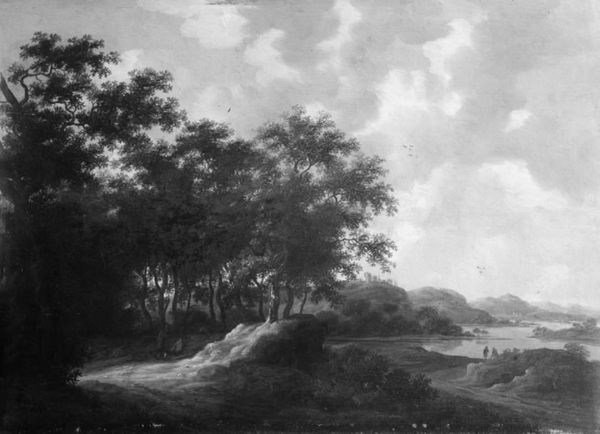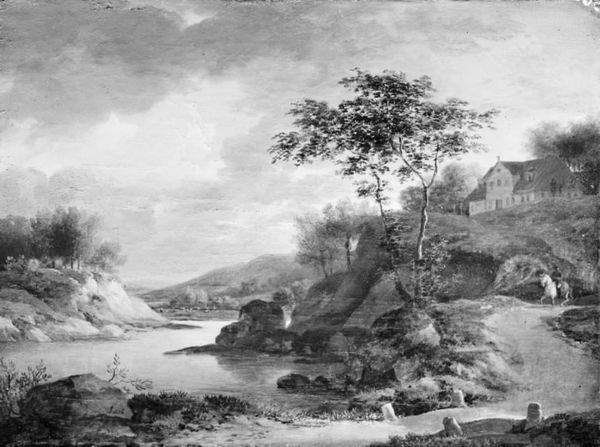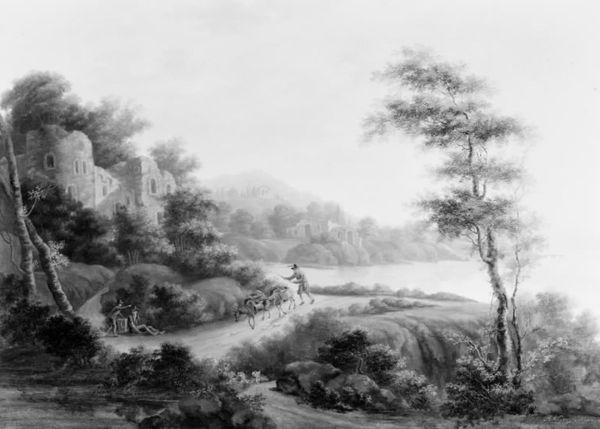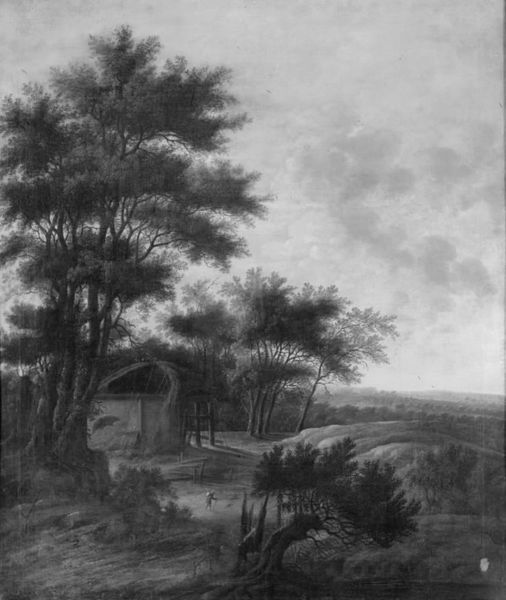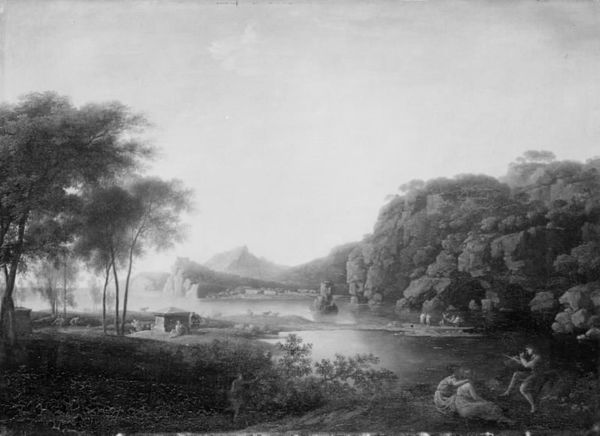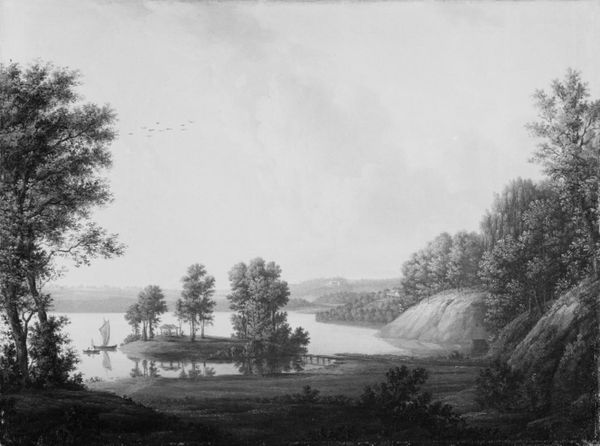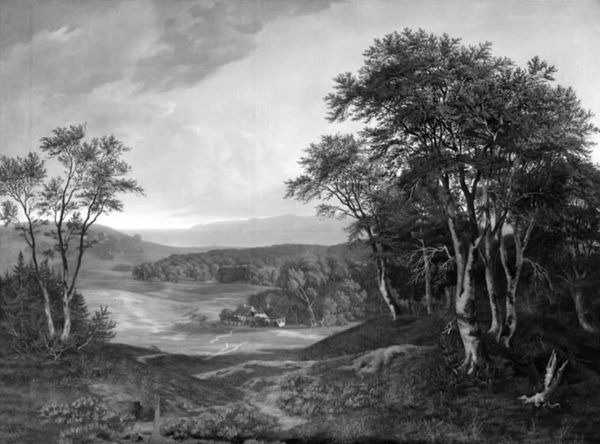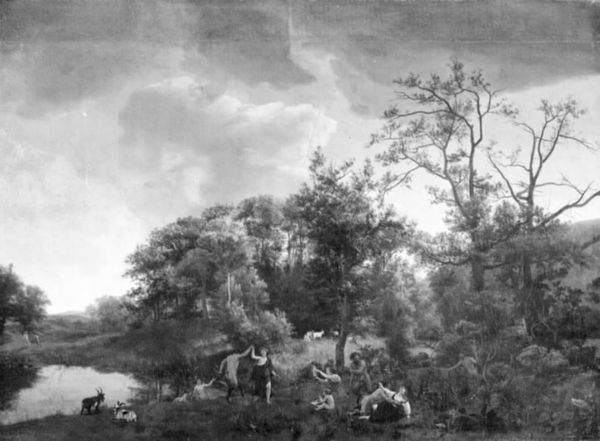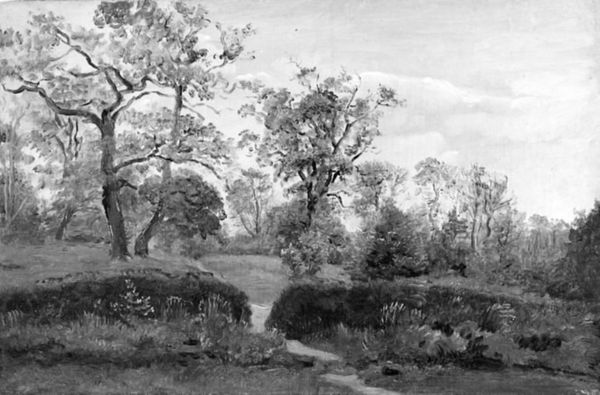
painting, oil-paint
#
painting
#
countryside
#
oil-paint
#
landscape
#
classical-realism
#
romanticism
#
black and white
#
monochrome photography
#
monochrome
#
realism
#
monochrome
Dimensions: 135.5 cm (height) x 186 cm (width) (Netto)
Curator: I’m drawn to the chiaroscuro; it gives the whole scene such a somber, reflective mood. Editor: Agreed. There is a deep stillness here. What is it? Curator: We're looking at Heinrich Buntzen's "Skovrigt landskab," completed in 1839. A rather muted landscape rendered in oil. What’s interesting to me is how seemingly mundane pastoral scenes in art reflect collective values around nature, homeland and identity during periods of social change. Here, the dark shades evoke introspection—an element of Romanticism looking inward as cultures faced modernization. Editor: It’s striking how the paint itself has aged. You can see the weave of the canvas. I wonder about Buntzen’s brushstrokes—were they deliberately creating that texture, or is it merely the passage of time playing tricks? The materiality almost pulls me into another era—a material record that is altered and marked, and becomes more telling across time. Curator: The symbols here tap into the subconscious too, especially when understood alongside the values of his time. Those skeletal, leafless branches—a classic memento mori, or symbolic meditation on mortality, which often indicates a desire to transcend material reality. And the dramatic clouds…very Romantic! Nature being powerful and humbling forces you to confront bigger existential questions. Editor: Right. And to consider this 'powerful nature,' think about how much labor went into even sourcing these raw materials for paints in 1839? Each pigment was sourced, mixed—a whole industry enabling even simple landscapes. And for whom was this vision created? Was this countryside for everyone, or did its accessibility fall sharply along class lines? These idyllic scenes often mask complex labor and power dynamics. Curator: Interesting question, because that very idea of idyllic life was used ideologically at times—artists often served the needs of wealthy patrons, which colors our reading today. So this particular monochrome treatment emphasizes themes that spoke to bourgeois anxieties about time and being in the world, in an accessible visual form. Editor: Yes! Well, now when I look at the painting’s surface again I cannot but wonder: What would Buntzen think of what this oil painting, as a physical object and artwork, reveals today? It certainly provokes unexpected questions regarding access, social messaging, materiality, labor, time…! Curator: Exactly! A lot more than initially meets the eye…
Comments
No comments
Be the first to comment and join the conversation on the ultimate creative platform.
